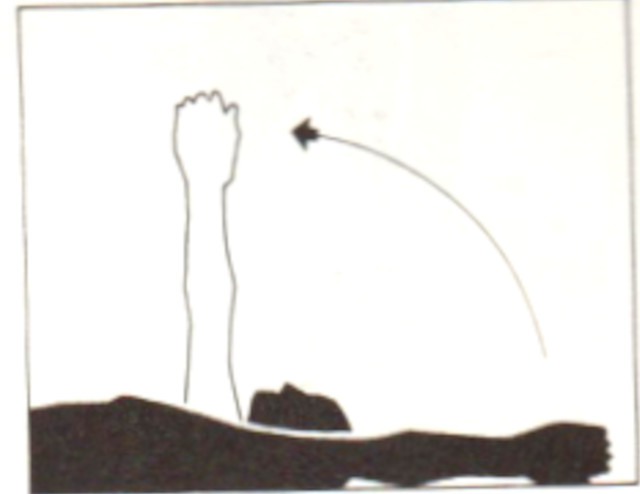Position: Lie on your back, with a soft pillow or small cushion under your head. Your arms are straight, resting down with your hands clasped together. Make sure there is space above and behind your head.
Movement: Keeping your elbows straight, lift your arms upwards as far as you can above your head.
Repetitions and frequency: 10-20 times, 2-3 times a day.
Note: Avoid pain. Do not force the movement beyond your natural painfree limits. If it is difficult for you to keep your hands together, hold a bar or stick (eg a walking stick) in your hands so that they are a shoulder’s width apart.
Benefits: Mobilizes and lubricates the shoulder joint, with gravity helping the movement as your arms go beyond the vertical up and behind your head. The shoulder is the most mobile joint in the body, and loss of movement is a major cause of problems in middle and later age. Keeping the shoulders mobile helps to reduce stress on the neck, upper back and even down to the lower back. Elevation is the movement of lifting the arm upward, and is a achieved through a combination of flexion (lifting forwards) and outward rotation of the arm.
After injury: Even a short period of immobility reduces the shoulder’s overall actions. As the uninjured arm can control the movement, this exercise is safe as soon as you can move the injured arm again, provided you only do the movement within painless limits. Gradually, you should regain mobility so that the shoulders move evenly again.



